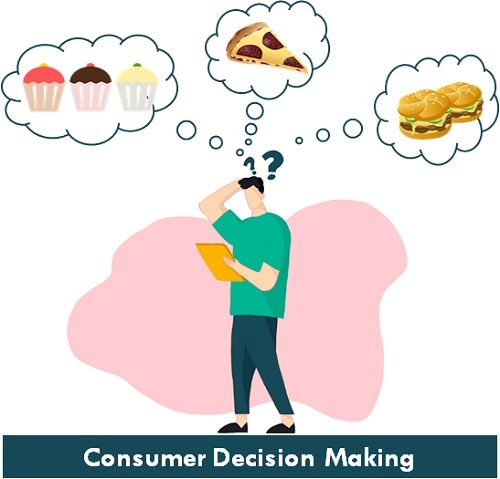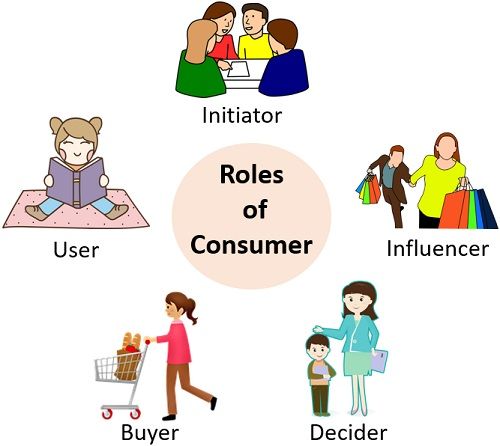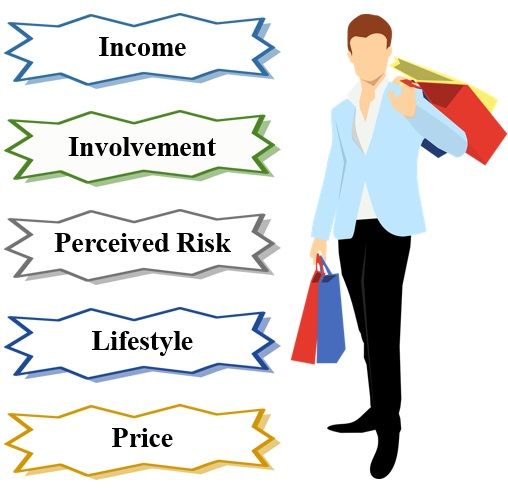Definition: Consumer Decision Making is the process of choosing products and services for consumption among various alternatives. It is the initial step in understanding consumer behaviour. And a base for marketers to devise customer-oriented strategies.
Following are some of the common decisions taken by consumers in daily life: –
- What to buy?
- How much to buy?
- From where to buy?
- When to buy?
- How to buy?

Every person makes many purchase decisions either for himself or for others. Therefore, we can conclude that every person is a consumer, either directly or indirectly.
While purchasing any product or service, the consumers often decide whether to buy it or not. We can call the final decision of choosing one option between the above two as decision-making.
The decision-making process is a way to find a solution for problems and achieve the desired goals. Hence, it provides solutions to the consumer’s problems.
Consumer Decision Making is studied to analyze the factors affecting the decision process.
The marketers want to know why the Consumer prefers one product over another. In addition, the marketers seek to study the spending pattern of the customers. For Instance: consumers’ decisions about the usage of their resources on luxury goods.
They analyze the customers’ mindset and strategize accordingly. Through this, marketers try to influence the customers’ purchase towards their products. Marketers develop and improve their marketing strategies with the aim to:
- Create and establish prolonged relationships with customers.
- Achieve customer loyalty by offering premium products.
- To define their target market more clearly.
- Improve the quality of the products and services offered by them.
- Influence the customers’ view towards other compelling products.
Content: Consumer Decision Making
- Influencers
- Roles of a Consumer
- Models
- Process
- Importance
- Factors Affecting Consumer-decision making
- Example
- Conclusion
Influencers in the Consumer Decision Making
Usually, the customers take advice from other people while purchasing the products. These people are part of the customers’ social environment and can influence their decision. For this reason, we call them Influencers.
Customers take advice from the influencers to become sure about their purchase.
Influencers can be anyone from the customers’ social circle, like:
- Family
- Friends
- Relatives
- Colleagues
- Society
Different Roles of a Consumer
The people or individuals who take part in the purchase process play several roles, like: –

Initiator: He is the one who plants the thought of buying a product in the customers’ mind.
Influencer: They are people from within or outside the family and affect the decision-making process. A dealer of any product can be an example of an influencer.
Decider: He is the one who actually makes the decision. Deciders consider both economic and non-economic factors while making the decision.
Buyer: The buyer is the one who actually purchases the product.
User: The one who consumes the purchased product is the user.
Consumer Decision-Making Models
There are four viewpoints or models under which the customers’ approach towards the purchase is categorized. These models explain that the customer can be Rational, Emotional or Practical while purchasing the products.
Let us understand these models briefly.
Economic Model/Economical View
In this, the consumer makes rational purchase decisions post thorough evaluation. He himself decides the purchase without getting influenced.
It is assumed that the Consumer is knowledgeable and fully aware of the pros & cons. Therefore, he is an economic buyer who takes logical and reasonable decisions.
However, this model is unrealistic because a customer cannot be rational all the time.
Passive Model/Passive View
As per the passive view, the consumer purchases products due to the firm’s marketing strategies. More precisely, it is believed that the purchase results from the company’s advertisement and promotional campaigns.
It is said to be the opposite of the economic view. Like the economic model, this view is also unrealistic. As it is impossible that the Consumer only purchases due to efforts made by the marketers.
Cognitive Model/Cognitive View
This model suggests that the Consumer buys products as per his understanding of the market demand. He is neither rational nor influenced by the marketer’s strategies.
It is considered to be the best among all four models. Because he himself computes the risks associated with the products.
Emotional Model/ Emotional View
Here the consumer has an emotional view while buying the product. He doesn’t consider the usage of the product but only focuses on the emotional front.
Therefore, customers become impulsive and take relatively less time in decision-making.
We consider the products that bring positive emotions. In contrast, ignore the one that brings negative emotions.
Consumers Decision Making Process
It is a framework that shows the five broad stages in which the final purchase decision is made. The steps involved in the consumer’s decision-making process are as follows:
- Need Recognition
- Information Search
- Evaluation of Alternatives
- Purchase Decision
- Post Purchase Evaluation
Importance
A deep understanding of the decision process of the Consumer is essential for firms. They evaluate the overall process to formulate business plans and effective marketing strategies.
Therefore, it is important for a marketer in the following ways:
- Providing value to new and existing customers
- Improve customer satisfaction
- Competitive advantage in the markets
- Enhancing company value
- Generating a loyal customer base
Factors Affecting Consumer Decision making
There are certain factors that affect the decision-making of the customers. But, these factors may vary from person to person.
Marketers find some common parameters to ease the evaluation of the process. Some of the common factors affecting consumer decision-making are as follows:

- Income
Consumer disposable income primarily affects the buying decision. The person with less income will purchase low-priced products and vice-versa. - Consumers’ Involvement in the Decision-making
Another crucial factor is the involvement of the consumer in the overall process. As, the consumers also get influenced by other people involved in the process. - Perceived Risk
The risk associated with the products enables the buyer to decide whether to buy the product or not. - The lifestyle of the Consumer
The customer living a luxury life often goes for the premium range of products. Whereas, the one who belongs to the low-income group goes for affordable products. - Price of the Product
Product price is the major factor in every purchase. A large part of the consumer base is price sensitive. Thereby, influencing the decision-making process.
Example
Customers make decisions for every big or small purchase they make. Some of the examples of decision-making by the consumer are as follows:
- We go to the nearby grocery shop and choose between Ice-creams and Chocolate.
- Purchase of financial products like – Insurance policies, Mutual Funds and so on.
- Select the residential property by taking the help of the property dealer.
Conclusion
All in all, a marketer needs to understand how the consumers decide among alternatives. This will assist marketers in developing more influential marketing strategies. Consequently, boosting sales and increasing their consumer base.
Leave a Reply